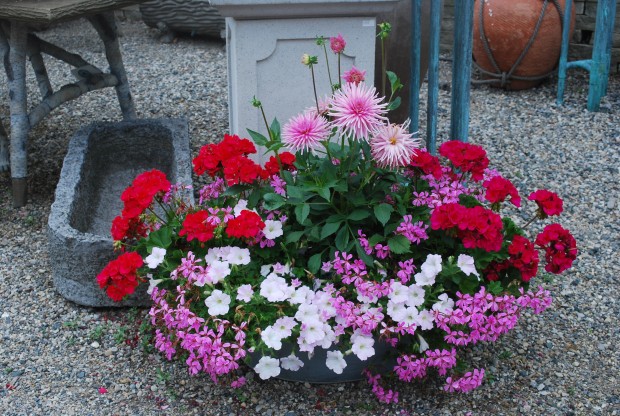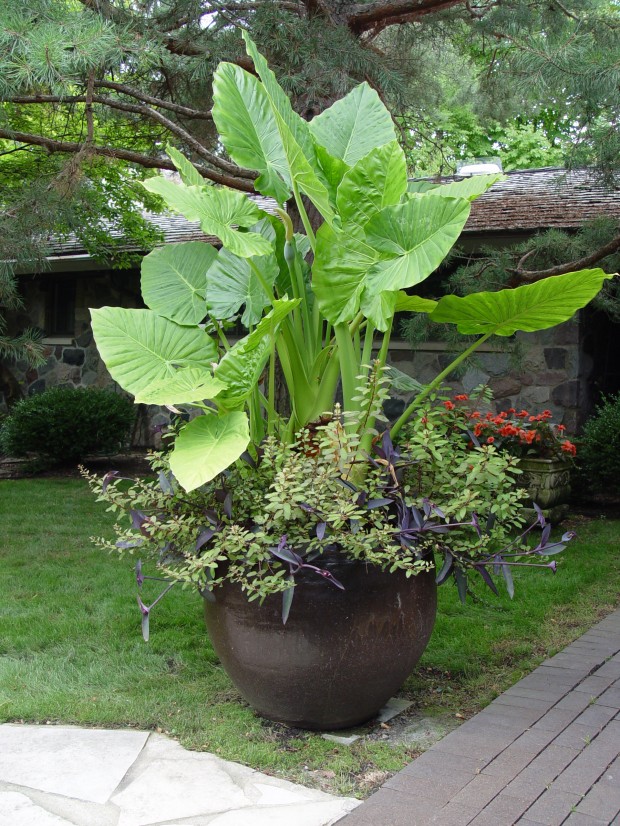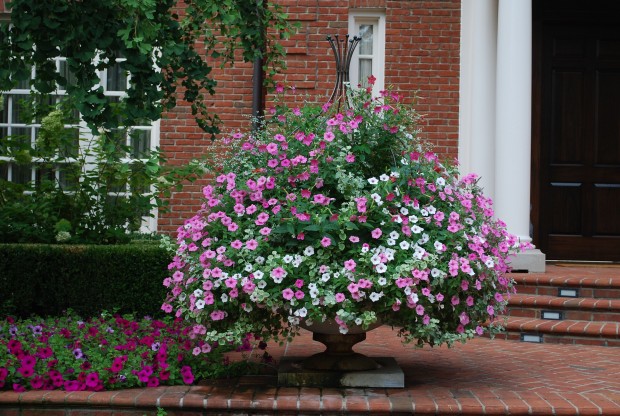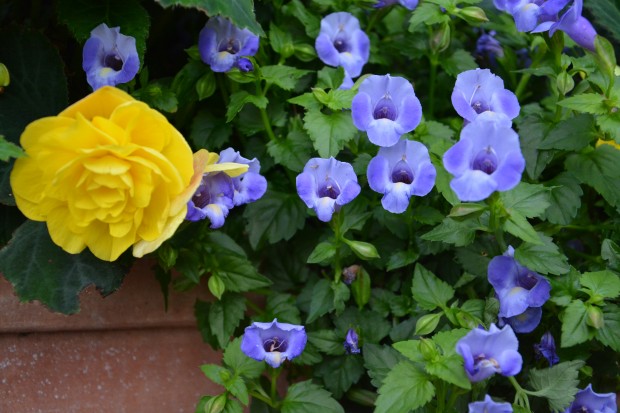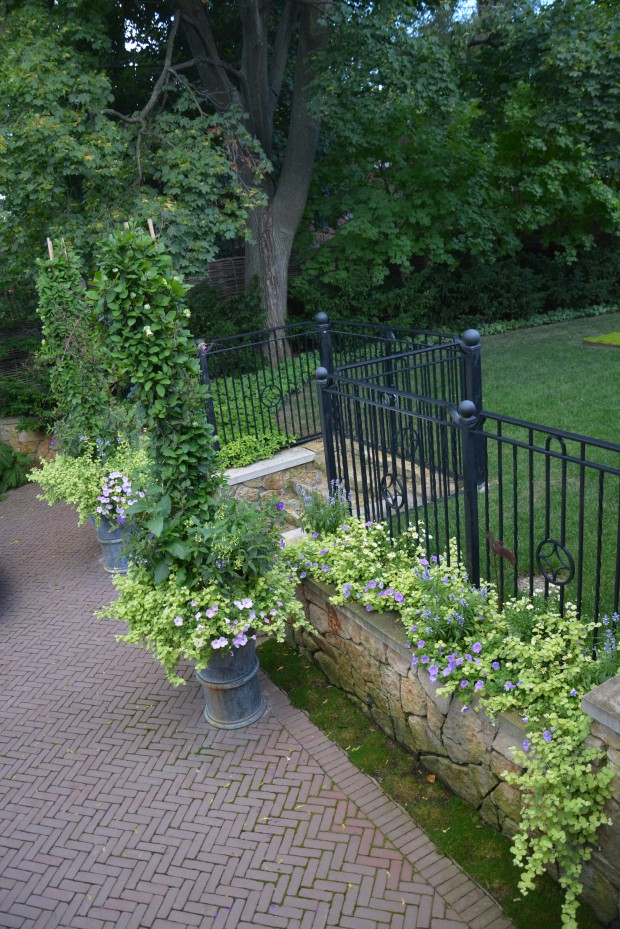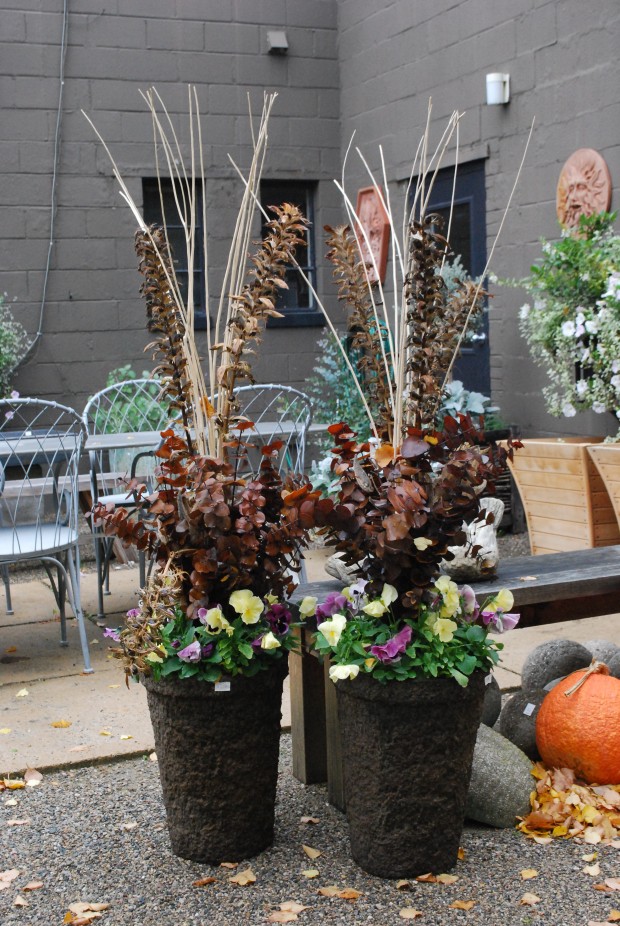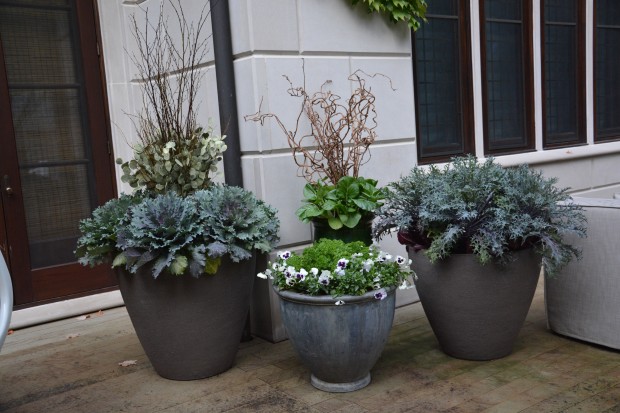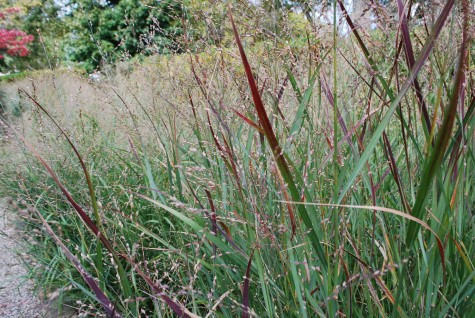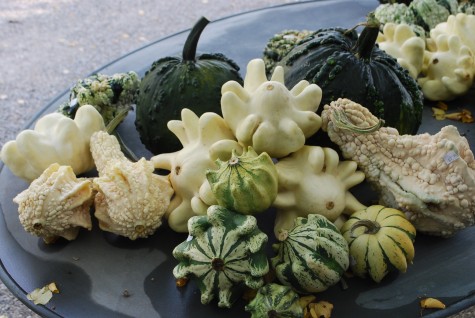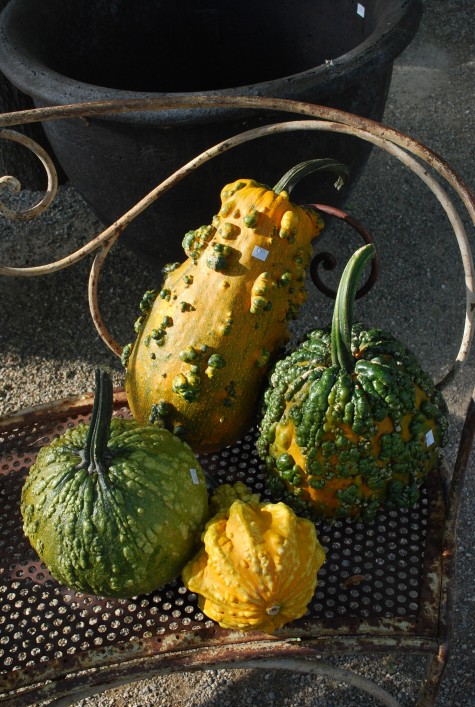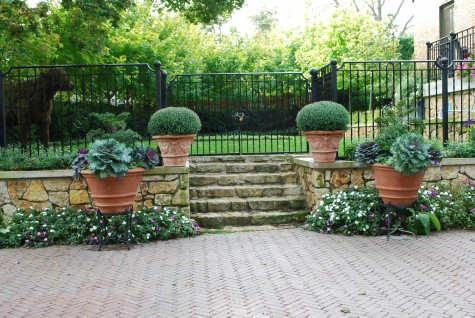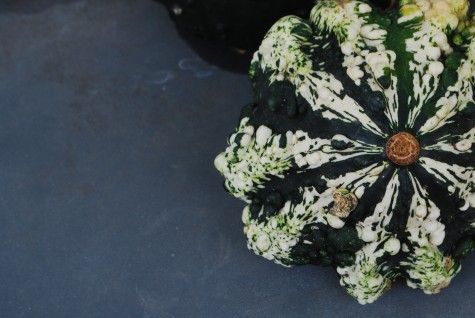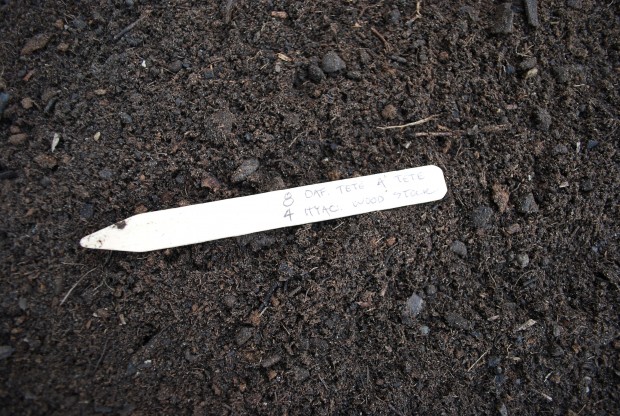 I like planting in the fall. The weather is cooler, and the rain more reliable. The work of it seems easier. Some plants are not so happy with a fall planting. I like to delay planting beech, birch, magnolia and dogwoods until the spring. Other species readily transplant in the fall, when they are dormant. Dormant plants suffer the trauma of transplant more readily when they are sleeping . I am uneasy about planting perennials much past the end of September, for fear they will not have enough time to root before the frost heaves them every which way- including out of the ground. However, it is never too late to plant spring flowering bulbs. Should you be able to get your shovel in the ground in February, the bulbs you bought in October will most likely be fine-provided you stored them in a cool spot.
I like planting in the fall. The weather is cooler, and the rain more reliable. The work of it seems easier. Some plants are not so happy with a fall planting. I like to delay planting beech, birch, magnolia and dogwoods until the spring. Other species readily transplant in the fall, when they are dormant. Dormant plants suffer the trauma of transplant more readily when they are sleeping . I am uneasy about planting perennials much past the end of September, for fear they will not have enough time to root before the frost heaves them every which way- including out of the ground. However, it is never too late to plant spring flowering bulbs. Should you be able to get your shovel in the ground in February, the bulbs you bought in October will most likely be fine-provided you stored them in a cool spot.
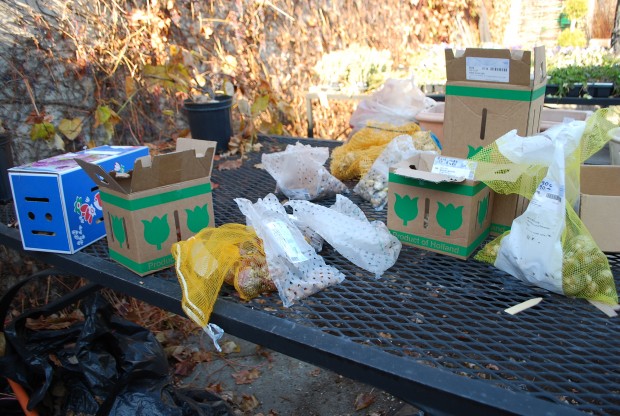 This is our bulb planting week. We are tackling this project for clients later than usual-it has been a very busy fall. Most of our projects involve large spaces planted with tulips for spring. But we do have those people for whom we add a little of this and a little of that every year. No matter the scale of your garden, and the spaces you have available for spring flowering bulbs, taking the time to plant them is well worth the effort. When the winter breaks here in March, and the crocus come into bloom-that is a day I treasure. Both the Farmer’s Almanac and the National Weather Service is predicting a very cold and very snowy winter here. There is everything good about defending your gardening self with some spring flowering bulbs.
This is our bulb planting week. We are tackling this project for clients later than usual-it has been a very busy fall. Most of our projects involve large spaces planted with tulips for spring. But we do have those people for whom we add a little of this and a little of that every year. No matter the scale of your garden, and the spaces you have available for spring flowering bulbs, taking the time to plant them is well worth the effort. When the winter breaks here in March, and the crocus come into bloom-that is a day I treasure. Both the Farmer’s Almanac and the National Weather Service is predicting a very cold and very snowy winter here. There is everything good about defending your gardening self with some spring flowering bulbs.
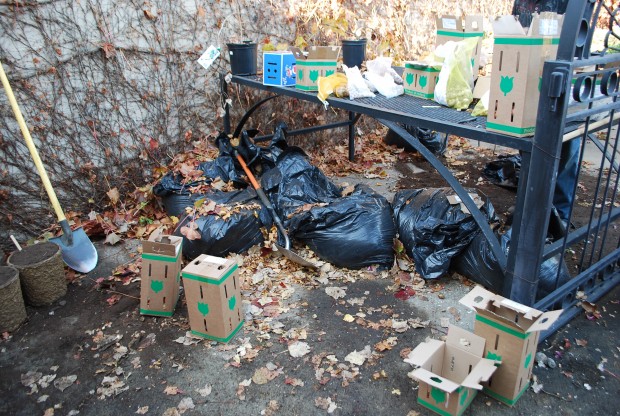 The spring flowering bulbs include tulips, daffodils, hyacinths, and a whole host of small flowering bulbs. Don’t forget the alliums, which will bloom in June. All of the nurseries local to me have bulbs available. It seems like preaching to the choir to be encouraging gardeners to plant spring bulbs, but I have my reasons. Planting bulbs is just about the least satisfying planting done in the garden all year. When it is cold, windy, and wet, you are out there burying brown blobs in the dirt. When you are finished planting, you have nothing to show for all the work. Even more discouraging is the fact that the show is months away. I wouldn’t say that bulb planting is particularly pleasant for gardeners-it takes effort in conditions that are usually less than ideal. But the rewards in the spring-enormously satisfying.
The spring flowering bulbs include tulips, daffodils, hyacinths, and a whole host of small flowering bulbs. Don’t forget the alliums, which will bloom in June. All of the nurseries local to me have bulbs available. It seems like preaching to the choir to be encouraging gardeners to plant spring bulbs, but I have my reasons. Planting bulbs is just about the least satisfying planting done in the garden all year. When it is cold, windy, and wet, you are out there burying brown blobs in the dirt. When you are finished planting, you have nothing to show for all the work. Even more discouraging is the fact that the show is months away. I wouldn’t say that bulb planting is particularly pleasant for gardeners-it takes effort in conditions that are usually less than ideal. But the rewards in the spring-enormously satisfying.
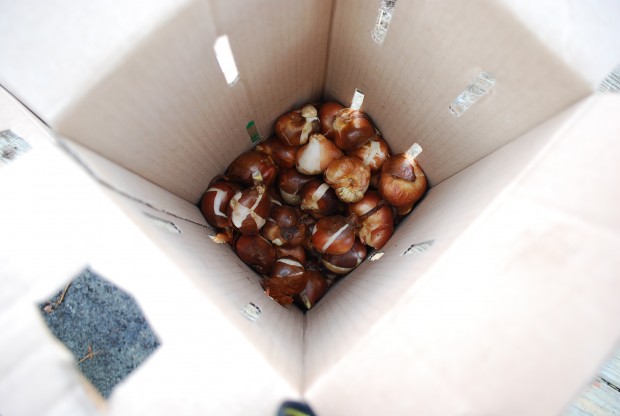 As difficult as it may be to generate excitement for a job with no immediate rewards, the pleasure to come is worth the wait. Each one of those brown orbs is loaded with the promise of the gardening season to come.
As difficult as it may be to generate excitement for a job with no immediate rewards, the pleasure to come is worth the wait. Each one of those brown orbs is loaded with the promise of the gardening season to come.
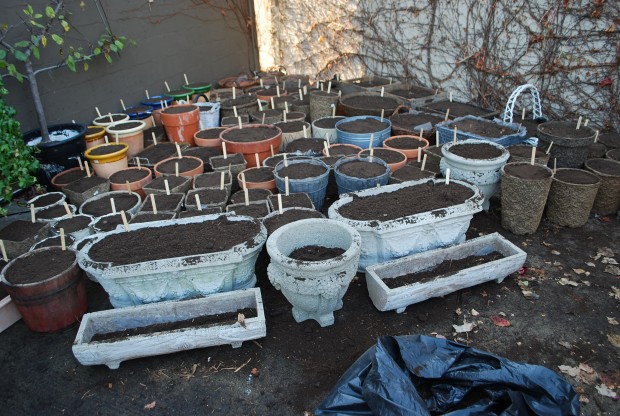 I plant a lot of bulbs in pots. I find this easier than trying to imagine where my perennial garden might need tulips, or where I planted daffodils last year. I do not force the bulbs I plant in containers. I bury them under a huge pile of leaves, or store them in the garage, and bring them out early in March. I want them to bloom at the same time that they are blooming in the garden. Pots of spring flowering bulbs can be placed on a front porch, or by the back door, or dropped into a container. I like that I can move them around.
I plant a lot of bulbs in pots. I find this easier than trying to imagine where my perennial garden might need tulips, or where I planted daffodils last year. I do not force the bulbs I plant in containers. I bury them under a huge pile of leaves, or store them in the garage, and bring them out early in March. I want them to bloom at the same time that they are blooming in the garden. Pots of spring flowering bulbs can be placed on a front porch, or by the back door, or dropped into a container. I like that I can move them around.
 This may seem counter intuitive, but bulbs in pots will rot if they freeze solid through and through. The temperature of the soil is always warmer than the air temperature-but bulbs in pots do not have the luxury of the protection of the ambient warmth of the ground. There are certain places in our shop garage that are good for storing planted pots of bulbs.
This may seem counter intuitive, but bulbs in pots will rot if they freeze solid through and through. The temperature of the soil is always warmer than the air temperature-but bulbs in pots do not have the luxury of the protection of the ambient warmth of the ground. There are certain places in our shop garage that are good for storing planted pots of bulbs.
 Spring flowering bulbs are programmed from the start to come up, throw leaves, and bloom. Very little gets in the way of the way of that. I have had good luck repotting spring bulbs already in bloom into different containers, providing I handle them carefully. We did these grape hyacinths in little pots with the bulbs exposed for an event.
Spring flowering bulbs are programmed from the start to come up, throw leaves, and bloom. Very little gets in the way of the way of that. I have had good luck repotting spring bulbs already in bloom into different containers, providing I handle them carefully. We did these grape hyacinths in little pots with the bulbs exposed for an event.
 Miniature daffodils handle life in a pot a liottle better that the large flowered varieties. If I do pot up big growing daffodils, I keep the soil level well below the rim of the pot. That rim helps to keep the flowers and leaves standing upright. If I do bring potted flowering bulbs indoors, I try to find a relatively cool spot for them. An ideal spring for bulbs in the ground depends on cool weather during the day, and chilly weather at night. Once the weather gets warm, spring bulbs will fade.
Miniature daffodils handle life in a pot a liottle better that the large flowered varieties. If I do pot up big growing daffodils, I keep the soil level well below the rim of the pot. That rim helps to keep the flowers and leaves standing upright. If I do bring potted flowering bulbs indoors, I try to find a relatively cool spot for them. An ideal spring for bulbs in the ground depends on cool weather during the day, and chilly weather at night. Once the weather gets warm, spring bulbs will fade.
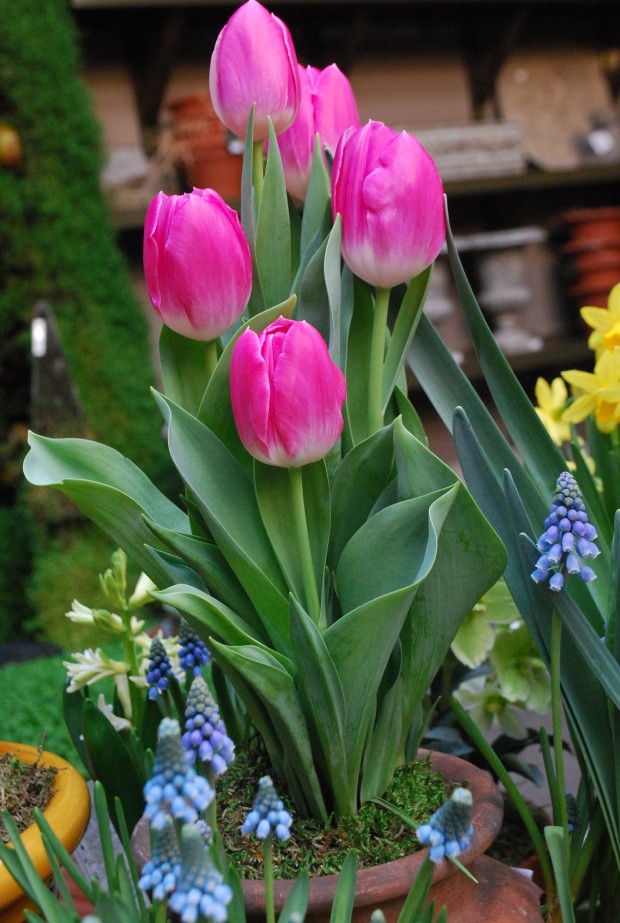 The bulbs it would take to make a handsome spring garden could fit in a modestly sized box. I would seize one of the few remaining warm afternoons we will have, in pursuit of a little spring color.
The bulbs it would take to make a handsome spring garden could fit in a modestly sized box. I would seize one of the few remaining warm afternoons we will have, in pursuit of a little spring color.
 A little box of spring flowering bulbs makes a big statement about spring.
A little box of spring flowering bulbs makes a big statement about spring.
 tulips in the spring – indescribably delicious.
tulips in the spring – indescribably delicious.
